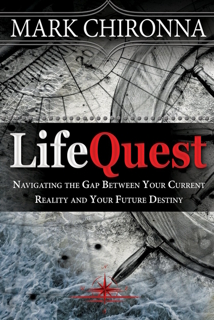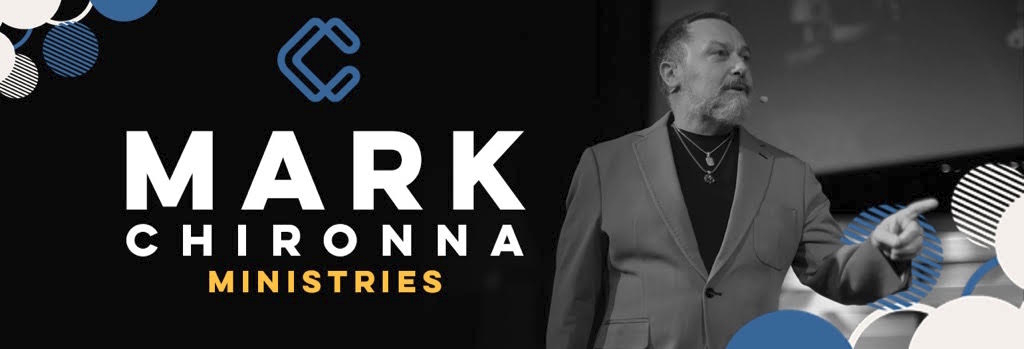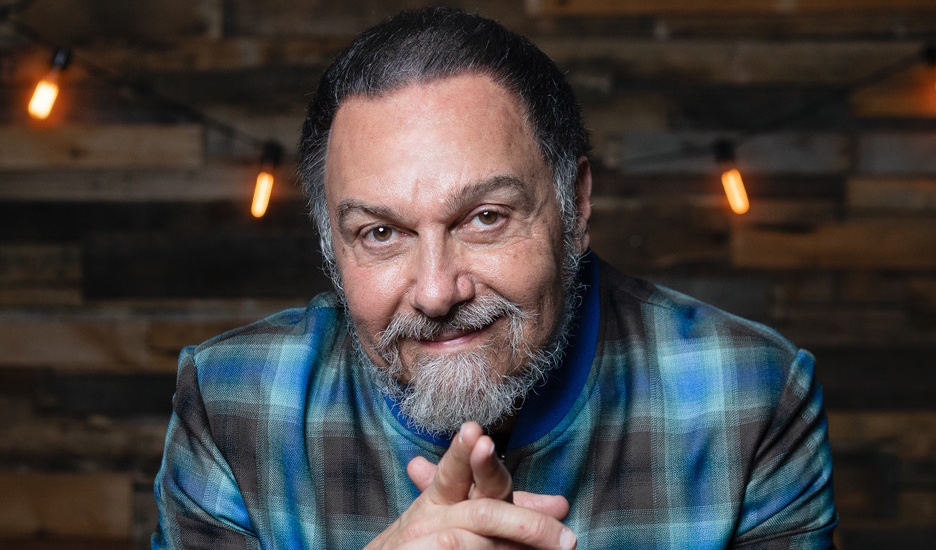The Culture of Humbug and the Cost of Truth
- Written by Mark J. Chironna, PhD.

P. T. Barnum once quipped that it would be a wonderful thing if some ingenious Yankee could invent a machine to measure the infusion of humbug in anything, “a Humbugometer,” he called it. He was sure it would sell well.i His joke points to something we still know instinctively: deceit is everywhere, and people will pay for both its production and its detection.
The philosopher Max Black, writing more than a century later, observed that humbug has “the peculiar property of being always committed by others, never by oneself.”ii In his essay The Prevalence of Humbug, he pressed the point that humbug is notoriously hard to define, precisely because we excuse ourselves while condemning everyone else. He analyzed self-deception in terms of “selective attention,” a twilight awareness in which we partly register unwelcome truths while simultaneously masking them from ourselves. Habitual humbug, he warned, can harden into character: “the mask eventually becomes ingrown, fits the face as closely as a death mask.”iii
Harry Frankfurt, in his slim but influential book On Bullshit, argued that humbug’s modern cousin is even more corrosive.³ Unlike the liar, who at least cares enough about truth to conceal it, the bullshitter is indifferent to truth altogether. For Frankfurt, this is what makes bullshit so pervasive and so dangerous: it thrives not because it’s hidden, but because we no longer insist that words correspond to reality.
Together these voices, Barnum’s satire, Black’s philosophy, and Frankfurt’s analysis, frame the challenge before us. We live in a culture where distortion is ambient, self-deception is common, and indifference to truth is rewarded. If we are to recover any shared ground, we must first reckon with the extent of our humbug.
Why does humbug thrive? Part of the answer lies in the way our minds are built. Daniel Kahneman, the Nobel laureate, explains that the brain runs on “cognitive ease”, the sense that what is familiar or fluent feels true. Repetition, clear presentation, or even good mood make us more likely to accept something without scrutiny. In his words, when we are at ease “we are likely to be relatively casual and superficial in our thinking” and more prone to believe what we hear.iv This is why a falsehood, told often enough, begins to feel self-evident.
Timothy Levine adds a second factor. In his Truth-Default Theory, he argues that humans are hardwired to accept most of what they hear as honest. We simply do not stop to question the majority of messages that reach us each day.v Deception slips past us not only because liars are clever, but because our default stance is trust. Together, these two findings, cognitive ease and truth-default, explain why humbug spreads so easily: we want to believe what feels familiar, and we instinctively assume others are telling the truth.
We are not only passive victims of deception; we are often willing participants. What slides past our defenses most easily is not simply what feels familiar, but what matches our desires. A falsehood that tells us what we want to hear feels like a gift, not a trick. It spares us from the friction of doubt and the burden of change. In that sense, deception works best when it confirms our hopes or justifies our fears.
Philosopher Max Black saw the deeper dynamic at work. We practice “selective attention,” tuning out what is unpleasant and amplifying what is reassuring. We partly know the truth; we catch the edge of it, like hearing the doctor say “unfortunately” before our mind leaps to the next comforting phrase, but we push the discomfort into the background. The result is what Black called a “twilight awareness,” where we both know and don’t know, believe and don’t believe.vi The lie survives because we want it to.
Twilight awareness, as Max Black framed it, is a fragile in-between state. It is not full light, but not full dark either. Rather it is a hazy consciousness that something is true, but without the willingness to face it. Psychologists and social scientists have described this same dynamic in their own registers: Freud addresses repression and the line between conscious suppression and unconscious burialvii; Jung’s work on the Shadow and how repressed material returns in dreams, projections, and compulsions speaks to thisviii; Leon Festinger’s naming of cognitive dissonance in 1957 reveals the ways we subjectively reduce mental tension by discounting inconvenient factsix; Daniel Kahneman’s insights on cognitive ease and the tendency of our mental economy that favors fluent, familiar claims makes this evidentx; and Dan Ariely names those small, rationalized self-deceptions that accumulate in us into a distorted picture of realityxi.
What is essential to realize is this: at this stage a choice still exists: we either confront and embrace the truth, or we begin that slippery and slow slide into avoidance. The first move of avoidance is suppression. Suppression is conscious. We know the feeling or the fact but choose not to deal with it in the moment. A person might set aside anger at a colleague in order to keep a meeting civil. Suppression can be a temporary coping strategy. But over time, repeatedly postponing confrontation risks becoming a pattern. As Liz Talago point out, over-reliance on suppression can push the mind toward repression.xii
Repression is different precisely because it is unconscious. It is the psyche’s protective move to bury unwelcome or traumatic truths so deeply they fall out of awareness. Freud identified it; Jung elaborated it. What is repressed is not erased, it is relocated. It sinks into the unconscious, where it continues to influence thought, behavior, and relationships in disguised forms.xiii
Jung taught that the unconscious does not stay quiet. It surfaces through dreams, where repressed material appears symbolically. It shows up in projections, when we disown what we fear in ourselves and cast it onto others. It fuels compulsions, repetitive behaviors that distract us from what we cannot face.xiv And at the social level, collective repression creates collective delusion, resulting in entire communities colluding in denial until repressed truths erupt as paranoia, scapegoating, or political frenzy.xv
Again, it was Max Black, in 1929 who warned that repeated self-deception hardens into character: “the mask eventually becomes ingrown, fits the face as closely as a death mask.”xvi That is the end of the cycle. Twilight awareness begins as an uneasy recognition. Suppression delays it. Repression buries it. But the truth does not disappear. It re-emerges in symptoms, distortions, and social fractures. The humbug we swallow outwardly becomes the lie we live inwardly.
In analytical psychology the rule is blunt: what remains unconscious exerts control. Jung’s point explains the sequence. What is buried governs from below until it is faced. His formulation, “until you make the unconscious conscious, it will direct your life, and you will call it fate,” names the pivot from symptom to responsibility.xvii The same framework clarifies how shadow material, complexes, and archetypal pressures do not stay idle in persons or in the public square.xviii
Humbug is the social face of that interior evasion. Max Black clearly warned about a century ago that practiced self-deception hardens into character.xix Harry Frankfurt showed the later stage, where indifference to truth itself becomes the currency of public speech.xx These dynamics are not conceptually difficult. They are only difficult to admit to ourselves. Psychology clearly and plainly explains why this spreads. Fluency and familiarity create cognitive ease. We prefer to accept what is repeated and smoothly delivered.xxi We also default to trust, which lets a great deal pass without scrutiny, especially when it confirms what we want to be true.xxii What we convince ourselves to be small, “acceptable” self-deceptions accumulate and stack up, distorting our picture of reality.xxiii
We desperately need a path back to truth-telling that is both personal and social, individual and collective. How do we proceed? First, there needs to be personal repair. We need to be accountable to our own psyche. The psyche is not designed to sustain deception indefinitely. We are certainly capable of lying, of constructing illusions and maintaining façades, but these maneuvers exact a price. Leon Festinger showed in his theory of cognitive dissonance that unresolved contradictions generate psychological strain until the tension is discharged.xxiv Freud and Jung both warned that repression does not erase conflict; it drives it underground, where it resurfaces as symptom, compulsion, or projection.xxv Jung went further: what is buried in the unconscious directs our lives as fate until it is faced.xxvi In short, the self cannot build its house upon lies without cracks appearing. Deception may postpone collapse, but it guarantees it.
We need to be willing to move from twilight to light. We need to be willing to honestly name what we have only half admitted. Perhaps keeping a written statement of current reality in plain terms would serve us well. This resists selective attention and lowers the mind's urge to edit discomfort away. xxvii Ruthless self-honesty is in order. We have become increasingly narcissistic, seeing ourselves as victims in more ways than we are willing to face. All of us have things that lurk in the depths, in the shadows. Things we have buried alive. And if they are buried alive, as Jung notes, they indeed stay alive. Doing the inner-work is non-negotiable at this juncture. We could benefit from bringing our shadow material into view through honest self-audit. We need to stop dismissing dreams as merely the result of late-night pepperoni pizza and instead recognize the long history across cultures of dreams as vehicles for restoring psychic balance. Otherwise, we increasingly self-sabotage by failing to face all parts of ourselves, good, bad, and downright ugly. Dreams, when we honor them, will honor us. We also need to be answerable and accountable to trustworthy others. When dissonance rises, we must remind ourselves that it is deadly to anesthetize it. Dissonance can guide us to the facts we prefer to avoid so that we can actually take meaningful, hopeful, and empowered action. The aim is not to crush the unconscious but to enter a working alliance with it, so that buried content is integrated rather than left to run the show.
Second, we urgently need social repair, which involves rebuilding relationships and trust within communities. We need to create spaces where people can openly discuss reality without fear of sharing bad news. Leaders with integrity need to hold both vision and facts together, not exaggerate either one. Honest tension here leads to action, not fantasy. Telling the truth is a habit, not a show. It involves checking claims carefully, exposing assumptions, and making it normal to welcome corrections, rather than shaming them. As Jospeh Jaworski says, leadership enables people to deepen their shared understanding of reality, which is how new and realistic futures can emerge.xxviii
Third, we need to recover civic guardrails; societal norms and practices that keep public discourse grounded, constructive, and anchored in shared values. Civic guardrails are informal rules that guide behavior, ensuring discussions remain respectful and focused on truth. This will enable leaders and facilitators to reward accuracy over virality. Reduce the fluency advantage of falsehood, the tendency for easily repeated falsehoods to spread faster than accurate statements, by labeling repeated misinformation and by pacing deliberation when the stakes are high. We need to ensure that we separate accountability from erasure. We all need to be accountable. None of us can afford to be erased. We need to hold one another accountable to facts and consequences yet refuse the corrosive habit of writing people off. A culture can recover civility and dignity only if it recovers contact with the real. Max Black’s warning stands. If we keep swallowing humbug, the mask will fit our faces. The way back is stunningly unglamorous. So, act: say what is. Correct what is not. Encourage others. Do it again tomorrow.
Billy Joel sang in the late 1970s, “Honesty is such a lonely word, everyone is so untrue.” The lyric captured what many felt at the time, and it still resonates today. Honesty feels lonely because truth-telling rarely comes cheap. It isolates before it unites. It unsettles before it heals.
But if honesty is lonely, it is also where renewal begins. To tell the truth is to resist the humbug we collude in and to bring what was repressed into awareness. It is the only path back to civility and dignity in a society bent by self-deception. The task is not complicated. It is not about technical expertise but moral courage. What is required is simple: say what is and live in a world shaped by truth, not illusion.
Written by Mark J. Chironna, PhD. - https://www.markchironna.com/
Bishop Mark J. Chironna PhD
Church On The Living Edge
Mark Chironna Ministries
The Issachar Initiative
Order of St. Maxmius
United Theological Seminary, Visiting
Professor, Co-director, House of Pentecostal Studies
Dr. Mark Chironna is a public scholar, executive and personal coach, and thought leader with five decades of experience in leadership development, cultural analysis, and future-focused strategies. With advanced degrees in Psychology, Applied Semiotics and Futures Studies, and Theology, he brings a unique interdisciplinary approach to helping individuals and organizations navigate complexity, unlock potential, and craft innovative solutions.
As a Board Certified Coach with over 30,000 hours of experience, he empowers leaders and teams to thrive through resilience, foresight, and actionable strategies. Passionate about human flourishing, he integrates psychological insight and cultural trends to inspire growth and transformation.










